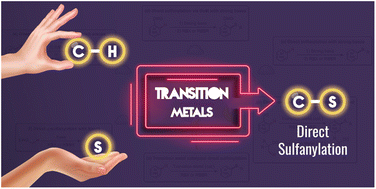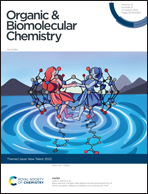Transition metal catalysed direct sulfanylation of unreactive C–H bonds: an overview of the last two decades
Abstract
Transition metal catalysed direct sulfanylations of unreactive C–H bonds have become a unique and straightforward synthetic strategy in late-stage C–S bond formation of relevant complex molecules. Such transformations represent a breakthrough in modern synthetic organic chemistry, as they offer unusual reactivity patterns and avoid pre-functionalization of the starting materials. Despite inherent challenges in activating/functionalizing unreactive C–H bonds, a considerable number of different transition metals have shown the ability to selectively catalyze these processes toward C–S bond formation. In this sense, this review article covers the development and mechanistic analysis of the direct sulfanylation of Csp3–H and Csp2–H bonds through transition metal catalysed reactions in the last two decades, providing an essential guide for organic chemists working on this research area.

- This article is part of the themed collections: Celebrating Latin American Chemistry and New Talent


 Please wait while we load your content...
Please wait while we load your content...